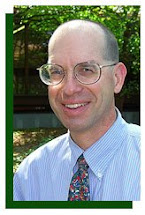 I like to walk. And apparently, many other Missourians like to walk also. In a 2003 survey conducted for the Department by the University of Missouri, 76 percent of Missourians said they had walked in their neighborhood in the last 12 months. Fifty percent said they had hiked in the outdoors. And 27 percent said they had run or jogged.
I like to walk. And apparently, many other Missourians like to walk also. In a 2003 survey conducted for the Department by the University of Missouri, 76 percent of Missourians said they had walked in their neighborhood in the last 12 months. Fifty percent said they had hiked in the outdoors. And 27 percent said they had run or jogged.I support conservation efforts for animals and plants in Missouri. And most Missourians feel the same way. More than three-quarters of Missourians agree that “the Missouri Department of Conservation should make an effort to restore animals that once lived here or are currently very rare in Missouri” (79 percent) and that the Department “should conserve and restore rare and endangered plants” (79 percent).
We can walk, or run, and show support for conservation at the same time. The 2007 Endangered Species Walk/Run, co-hosted by the Department of Conservation, the Department of Natural Resources, the Department of Health and Senior Services, the U.S. Fish and Wildlife Service, and the Jefferson City Parks, Recreation, and Forestry Department, will raise money to help restore habitat, conduct research, and support education projects for endangered animals and plants in Missouri. It will be held October 13, 2007 at the North Jefferson City Pavilion, in Jefferson City, Missouri. The pavilion is near the Katy Trail at the intersection of Highways 63 and 54.
If you can't make it to the event, you can still learn more about the endangered animals and plants in Missouri on the Web pages of the Missouri Department of Conservation.
The event is also one of the many ways that the Department of Conservation is accomplishing its goal to encourage and support partnerships between communities, local governments and developers to reduce the impact of Missouri’s growth upon our fish, forest and wildlife resources.
I can't attend this year to walk, but the shirt looks cool, and the registration information indicates that I can make a $25.00 donation and receive a shirt to show my support for conservation in Missouri.


